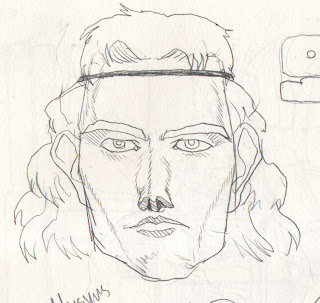Tai O
From late February until early March I spent a good week in Hong Kong. I went over to Hong Kong mainly for purposes related to immigration and residency status stuff. I had quit my job and I thought this was a good opportunity to spend some time with my parents and brother. What I hadn't thought about was that everyone in my family works, and I had completely forgotten that they were not going to be available for the majority of my stay...
Thankfully I was able to spend a good day with my mother because it was her day off on this specific day. The initial plan was to treat her to lunch, but surprisingly my mother asked if I would like to go on a quick trip to a fishing village around the neighborhood. This was a surprise to me for various reasons. Firstly, my mother had only started working a few years back, so before that she was just your average housewife. My mother was also known to be very inactive, and generally spent more time indoors. She was usually never the instigator of events, so the collection of all of these reasons surprised me. Apparently she had started swimming as well, thus enhancing her level of activity.
Anyways, enough of that. The area that we visited is called Tai O. It is a rural fishing village located on Lantau island. Luckily, my parents house is located in Lantau island so the fishing village was just a bus ride away. For most of the people living in Hong Kong it would require a long commute consisting of several transfers between buses and trains.
Tai O is a fascinating area, and considering that about ten or so years ago, when I was still located in Hong Kong, I had never made time to visit this area often enough. I was disappointed in myself for not doing so because this area was a beautiful sanctuary of a laid back rural lifestyle, emanating peace and tranquility. It may also have felt that way because we visited this area on a weekday. I can imagine it being much more populated during the weekends because of the tourists.
There is a good mixture of natural open areas befitted with mountains, trees and the ocean. The scent of the ocean water is inescapable, but the freshness of the air seems to penetrate the lungs to the deepest core and leaves a soothing sensation. (Of course this could just be a placebo effect.) The buildings and stalls located around this tightly knit neighborhood, with its narrow passageways emit a sense of history with its archaic architecture. Surprisingly though, among these old structures there are even older structures that seem to have been built in a time even before my fathers generation. This left a strange sense of history which represented the layers of time that had passed throughout the generations.
As you walk past the stalls you will come across various scents penetrating you nasal senses with fishy, salty aromas. Many of these stalls were selling dried fishing good that the locals would use to season their foods. There were also a fair number of stalls selling some kind of herbal tea, or juice, where the ingredients were quite foreign to me. They seemed to be some kind of herbal ingredient, but the juice that I had was laced with too much sugar for me to fully grasp the discreet flavor. It kind of felt like drinking vitamin water except the flavor was far more natural, but the level of sugar in the drink was sky rocketing.
Once you get past the inner area of the area and come out into the open space you can get to see the houses levitating above the sea water, because many of the houses are built above the water. It seems like these kinds of housing establishments are somewhat common among southeast Asia. (At least from what I've seen in photos.) Then in the opposite end of the spectrum there are the larger buildings that had a more modern structure to it. It was still far from being a very modern building that one would see in the cities, but they were very well kept and finely decorated with well kept trees, gardens and flowers.
My my mother and I had arrived at out final destination , which was a hotel located near the edge of this village area. Sadly, I didn't take a photo of the hotel, but I could try my best to describe it. Prior to this building becoming a hotel, it was apparently a police building. It seemed to have been built during the colonial era, thus eluding to its western facade. It seemed like it was repainted in all white to give it a nice face lift, and it was a very nice looking building, located on a hill which required a bit of climbing. The rooftop cafe that we rested in had a very western influence, and it had many windows allowing the patrons to fully enjoy the coastal view.
To be honest, this trip would have never happened if it wasn't for my mother. I have her to thank for being able to gather materials for this post.










































Comments
Post a Comment